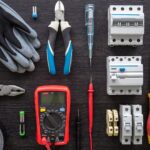Imagine this: you’ve equipped your home with the latest technology, a smart doorbell camera designed to provide peace of mind and capture every moment at your doorstep. But, what if your security isn’t as solid as you thought because the camera fails to record motion? This common issue can jeopardize your home security, but fear not—this article dives deep into diagnosing and fixing these motion detection problems.
- Discover why your smart doorbell camera isn’t recording, with a focus on motion detection settings and environmental interference.
- Learn how connectivity issues like poor Wi-Fi and router distance can affect your camera’s functionality and discover practical solutions.
- Find out how to optimize motion detection settings to ensure your camera reliably records every significant movement.
By the end of this guide, you’ll have the know-how to make the most out of your smart doorbell camera, ensuring your home is truly secure. Dive in and turn this annoyance into a learning opportunity, boosting both technology usage and peace of mind.
Optimizing Motion Detection Settings to Resolve Smart Doorbell Camera Not Recording Problems
Ensuring your smart doorbell camera records every necessary movement involves fine-tuning its motion detection settings. This is crucial for maintaining robust home security. Many users encounter issues when their smart doorbell fails to capture motion due to improperly adjusted sensitivity and zones.
To begin, adjust the motion detection sensitivity of your device. High sensitivity can cause your camera to record unnecessary movements, like swaying trees or passing vehicles, while low sensitivity might miss essential actions. Experiment with different settings to find the optimal balance for your environment.
Another essential step is to configure the motion detection zones. Most smart doorbell cameras allow you to select specific areas in their field of view that should trigger motion alerts and recordings. By focusing on critical zones, such as pathways and entry points, you can ensure that relevant activities are captured while minimizing false alerts.
For those using Wi-Fi networks, make sure that the camera is well within the range of your router to prevent connectivity issues that could affect motion detection functions. Regularly reviewing and updating these settings depending on changes in the environment or traffic patterns around your home can significantly improve your smart doorbell’s performance.
Understanding Why Your Smart Doorbell Camera Is Not Recording: Motion Detection Problems Explained
One of the most common issues users face with their smart doorbell camera is its failure to record movements. This often boils down to problems with the motion detection settings or external environmental factors. If your smart doorbell camera is not recording, it may be due to incorrect sensitivity settings. This can lead to either an overactive sensor or one that does not detect movement effectively.
Environmental factors also play a significant role. Changing weather conditions, such as strong winds, or even heavy traffic can trigger motion sensors unnecessarily, depleting battery life and clogging your video storage with pointless footage. Conversely, complex surroundings or insufficient lighting might cause the sensor to miss genuine movements.
Furthermore, understanding the different settings of motion detection can help in resolving recording problems. Another potential issue could be the camera’s field of view and how it’s adjusted to cover your doorway. Make sure it isn’t hindered by anything that might block its range.
Troubleshooting Connectivity and Network Issues
Poor Wi-Fi connectivity is a major culprit when dealing with smart doorbell camera not recording issues. Signal strength can drastically affect your device’s capability to function effectively, especially in cases where the router is positioned too far from the doorbell.
To enhance connectivity, first test your Wi-Fi signal at the doorbell’s location. Weak signals can be resolved by repositioning your router closer or employing a Wi-Fi extender directly between the router and the device. Also, ensure that other devices are not overcrowding your network, which might lead to interference and reduced performance for your doorbell camera.
Signal interference from walls, floors, or electronic devices may disrupt the Wi-Fi connection. Minimize physical barriers by strategically placing your router higher and away from other electronic devices. It’s also beneficial to switch to a less congested Wi-Fi channel to avoid interference from neighboring networks.
Another solution is upgrading your router if it’s outdated, which can greatly enhance performance and coverage. Regularly check for firmware updates for both the doorbell camera and your router, as these can bring enhancements in connectivity and security.
Smart Doorbell Camera Not Recording – FAQs
What should I check first if my smart doorbell camera isn’t recording?
Start by checking your motion detection settings and ensure your Wi-Fi is properly connected.
Can weather conditions affect my smart doorbell’s recording?
Yes, extreme weather can impact sensor accuracy, so consider placement and protective housing.
How can I improve the motion detection of my doorbell camera?
Optimize sensitivity settings and adjust the detection zones to cover desired areas.
Why is my doorbell camera’s Wi-Fi connection important for recording?
A stable Wi-Fi connection ensures consistent recording and alert notifications.
What can interfere with my doorbell camera’s Wi-Fi signal?
Thick walls, electronic devices, and long distances from the router can cause interference.





